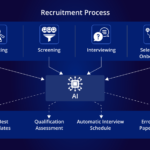Digital transformation has become more than a buzzword; it’s a necessity for businesses looking to stay competitive in an increasingly digital-first world. But while new apps, platforms, and digital solutions promise growth, their success depends on one critical factor: quality. That’s why professional QA and testing services are at the heart of every successful transformation journey.
No matter how innovative a solution looks, even small glitches can lead to customer frustration, revenue loss, and reputational damage. By embedding QA from the start, businesses can ensure smoother rollouts, stronger customer trust, and better long-term scalability.
Why QA and Testing Are Essential in Digital Transformation
When businesses embrace digital transformation, they introduce complex systems, cloud platforms, and new customer experiences. Without robust testing, these initiatives face serious risks:
- Adapting to AI-Driven Change: According to recent research, 59% of hiring managers say the rise of AI will have a substantial or transformational impact on the types of skills their companies need. This shift means QA must evolve too, focusing on testing AI-driven features, automation, and complex integrations that are becoming central to digital products.
- Ensuring Reliability and Trust: Customers expect flawless digital experiences. QA helps prevent downtime, crashes, or failures that could erode trust.
- Enhancing Customer Experience: Seamless navigation, fast response times, and intuitive functionality are tested to ensure end users stay engaged.
- Avoiding Costly Errors: Fixing issues after launch costs up to 6x more than identifying them during development. Early QA reduces these risks.
- Supporting Faster Time-to-Market: With automation and agile testing, businesses can launch quicker while maintaining high quality.
Key Benefits of QA and Testing Services
Digital transformation initiatives succeed when products are reliable, secure, and scalable. Investing in QA and testing services ensures these standards are consistently met. Here are the key benefits:
1. Improved Product Quality
QA verifies that software meets functional, performance, and usability standards. The result is a product that not only works but delights end users.
2. Enhanced Security and Compliance
With cyber threats on the rise, security testing ensures applications are resilient. Compliance checks (e.g., GDPR, HIPAA, PCI DSS) protect both organizations and their customers.
3. Cost Efficiency Through Early Bug Detection
Fixing a bug in production can cost exponentially more than addressing it during development. QA reduces long-term costs by catching issues early in the cycle.
4. Scalability for Future Growth
Testing evaluates how systems perform under increasing loads, ensuring digital platforms can scale as customer demand grows.
5. Faster Time-to-Market
Automation, CI/CD integration, and agile QA practices allow businesses to release updates rapidly without compromising quality.
6. Better Customer Satisfaction and Retention
A smooth, bug-free user experience builds trust. Satisfied customers are more likely to return, recommend, and remain loyal to a product.
Best Practices for Effective QA and Testing
To maximize the value of QA and testing services, organizations should follow proven strategies that align with modern development practices and digital transformation goals:
1. Adopt a Shift-Left Approach
Integrate testing early in the development cycle. Detecting defects at the design or coding stage saves time, money, and resources compared to post-launch fixes.
2. Leverage Test Automation
Automation frameworks accelerate repetitive and regression testing, freeing QA teams to focus on complex scenarios. Automation also ensures consistency across builds.
3. Implement Continuous Integration and Delivery (CI/CD)
Combine QA with CI/CD pipelines to run tests automatically during every update. This enables faster releases without sacrificing quality.
4. Prioritize Performance and Security Testing
Beyond functional checks, test for speed, scalability, and resilience under stress. Include penetration testing and compliance audits to protect sensitive data.
5. Foster Collaboration Across Teams
Encourage developers, testers, product managers, and business stakeholders to work closely. Shared ownership of quality ensures that testing aligns with business goals.
6. Keep QA Aligned with Emerging Tech
As AI, IoT, and cloud-native solutions expand, QA teams must update their skills and adopt new tools to test modern digital products effectively.
7. Case Example: QA Driving Success in Retail
A leading retail brand launched a new mobile app to support digital transformation. Initially, customers reported slow load times and frequent checkout failures. After implementing a structured QA process with automation and performance testing, the company saw:
- 40% faster load times
- Significant drop in cart abandonment
- Increased positive reviews on app stores
This example shows how QA can turn a struggling digital product into a growth enabler.
Final Words
Digital transformation is not just about adopting new technologies — it’s about delivering consistent, secure, and engaging experiences. Robust QA and testing services ensure that businesses can innovate with confidence, minimize risks, and maximize value from their digital initiatives.
By embedding QA into every stage of development, organizations not only improve product quality but also gain a competitive advantage. In the digital age, quality isn’t optional, it’s the foundation of transformation.



